BMT has released details of its next generation ‘Pentamaran’ platform for autonomous operation.
Offering a myriad of applications for defence and commercial innovators, the firm say that the vessels may be custom configured for military, patrol, intelligence surveillance and reconnaissance (ISR), anti-submarine warfare (ASW) and hydrographic survey work.
“The design is the latest from the BMT’s team of expert naval architects and engineers who have been at the forefront of innovative hull design for 34 years. The Pentamaran has been designed to reduce drag as much as possible and tests have proven it offers significant improvements compared to conventional hull forms such as mono-hulls, catamarans and trimaran. The vessel features a very slender central hull and two smaller hulls or ‘sponsons’ on either side. The sponsons are set one behind the other and when the vessel is operating on flat water, the forward sponsons are not submerged, as they provide roll stability effect in waves only. Compared to a trimaran there is less volume permanently immersed and therefore less resistance through the water.”
The Pentamaran has been designed to reduce drag as much as possible and tests have proven it offers significant improvements compared to conventional hull forms such as mono-hulls, catamarans and trimaran, say the firm.
“The vessel features a very slender central hull and two smaller hulls or ‘sponsons’ on either side. The sponsons are set one behind the other and when the vessel is operating on flat water, the forward sponsons are not submerged, as they provide roll stability effect in waves only. Compared to a trimaran there is less volume permanently immersed and therefore less resistance through the water.”

Martin Bissuel, Business Sector Lead for Specialised Ship Design at BMT said:
“Our team have carried out extensive work on this. The data gathered through extensive towing tank testing is very compelling. For applications where fuel economy matters, the Pentamaran hull form is more efficient than conventional full forms, which means that using the same engines and the same amount of fuel, it will go further than any other, making it an ideal candidate for autonomous applications. Looking at it from a distance it may resemble a trimaran but that’s where the similarities end.
The arrangement and careful positioning of the four sponsons makes all the difference. The forward sponsons stay above the water, and only come into action when the vessel rolls, so not only the drag is reduced, but the sea keeping characteristics are improved. Compared to a trimaran hull form, lateral accelerations are lower, reducing g-loadings on the structure as well as the antennae and sensors on deck. The wide deck offers a large working area for multi-role capabilities. It can accommodate payloads or interface with other systems such as unmanned air vehicles.”
A key consideration, when a vessel is operating autonomously for long periods of time, is the reliability of the propulsion setup which is essential to sustained operational readiness. Our engineers have therefore integrated multiple independent power sources to increase reliability as well as survivability.







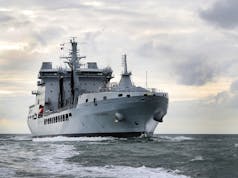
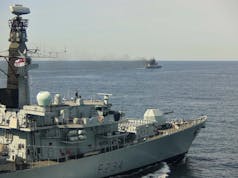
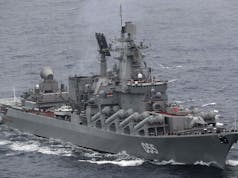
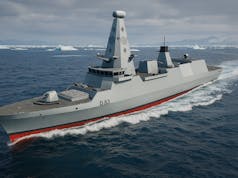

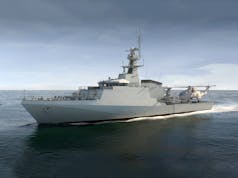

Good. We will have 50 to try out. Arm them to the teeth. Autonomous obviously. Need a Mother ship. They can join QE on her trip next year. How much are they?
Front line commands – “Shiny. Want one”
? Have a couple
Treasury – “Here’s an airfix kit”
BMT. How soon will this company be bought by (or sold to) another country?
https://www.bmt.org/about-us/our-independence/
Company seems to be owned by the employees. Good for them. I’m guessing they are doing fine without any military business which may or may not appear.
The Spanish will probably run off a couple of billion illegal Euro like they did to buy various UK banks and Heathrow. We let them, we are so dumb although with Coronavirus it may not work out so well. Hope.
Taking a slightly different tack I personally wonder the establishment has got the imagination for looking at any of this stuff!
For conflict after conflict we are attracted by the stuff we know and is in our comfort zone.
If this had looked like a T45, T26 or T31 there would have been loads of comments by now. I’m not sure anyone knows what to say about this!
The problem i see with UAVs in general, is they are currently being designed as a solution to a problem not yet discovered. Rather than being designed to tackle a military gap. Its like a lot of tech start ups that fail, because they don’t have a market.
In a war situation, you need armament to do anything realistic, and that requires a certain size and cost. If the UAV is purely there as a scout vessel, then there needs to be a mothership available to provide the offensive capability, which doesn’t really solve any problems today, because if the mothership is in range why do you need the drone.
Something like this with a towed sonar could be really useful for creating a bubble around a task force (knowing a sub is in the area is useful), but as we know from our current fleet towed sonars come at a cost and that doesn’t appear to be affordable for all current vessels let alone additional ones. Potentially the same thing for beyond visual range radar platform.
Would you need a towed array with a USV? If they are small enough that you could deploy a bunch of them from a mothership, you could just disperse them over a wide area and use them like mobile sonobuoys to detect subs by triangulation of signals.
“because if the mothership is in range why do you need the drone.”
Expand the RFA. Use multi role vessels and arm them with UAV of all kinds.
the reason for towed arrays is the ship towing them makes too much noise, i assume that a UAV would also have a engine that would make noise.
Do you mean USV? If they hear one of these things then they sink it giving away their position and ending up dead themselves?
That’s a bg question that perhaps needs a little literal thinking. Some of the electric motors being introduced or visualised now are both quiet and efficient, enough for such a requirement I don’t know but wouldn’t judge at this juncture. Equally unlike a traditional vessel it may not need to be powered and moving continuously especially if a number of them were used in unison. Certainly in a scenario like the one most recently off of Syria and perhaps the Gulf too where a carrier force is relatively holding station or indeed many a littoral scenario they could potentially be very useful as a far off picket where they won’t have to travel great distances or give their own position away. Only testing will answer all the questions but I can see potential over the next decade or so of developmental prototyping.
Every ship which puts to sea has a large range of technologies which are constantly evolving. Small vessels is a technology in itself which we need to drive but I think you are right that other area such as electric motor, new power sources etc. are coming on stream and we should embrace them and not be afraid of them. Sometimes it won’t work but learn from mistakes and move on.
is the whole point of the RFA is that they are not meant to be on the front line and therefore have less training than the regular navy. If you started arming the RFA, you would need to train them etc to the same level which would i assume would come at an increased cost.
That is fine. Let me refine my comment to “RFA type vessels” then, rather than actual RFA. Not a full blown warship but a vessel that has self defence and lots of UAV and USV operating from it.
My brain is thinking mother vessel in pirate, drug smuggler areas with marines and UAV or helis aboard, rather than using one of our scarce warships. Or mothership as part of a carrier group with lots of USV for ASW.
Like with the thread on RFA Argus the other day, would more of that sort of vessel be not only cheaper but more appropriate in many roles than a T26 / 45 / 23 / 31.
As for arming of RFA vessels, those operating any helicopter and those operating CIWS / gun armament I believe are RN?
Totally agree with you with the exception of mine countermeasures where ROVs are the way ahead for obvious reasons
Everything that has saved our bacon or caused us issues in the past has been new. Tanks, Carriers, Machine guns etc. Ignore the inventors at your peril.
Why not arm these things. How much space do you need for CAMM anyway. One boat could have missiles, another towed array, another torpedoes etc. you then create maybe 30,40 or 50 targets for an enemy rather than having all your eggs in one basket.
Also they would be far cheaper to buy and run.
You’re bubble might be hundreds of miles wide.
We need cheap & flexible resources in this day and age which we can afford to loose but carries a massive punch. Stop banging on about hulls, displacement and crew although the bigger the better. In my view the smaller the better.
Exactly, history shows us that those who embrace new technology take an early lead.
What if somebody just stole it?
Lol. Good point. Put a tracker and/or some sort of self-destruct device. Hopefully they won’t just leave them lying around. Everything new provides its own challenges.
Imagination and operational prejudice play a big role in HM armed forces development and equipment. For example the dislike of overlapping capabilities. Ridiculous statements about having not fired an anti-ship weapon in x number of years therefore we don’t need them etc. Adapting to changing conditions or enemy capabilities takes too long because of the same level of prejudice at the top. Sometimes I’m suprised we ever moved on from volley fire and the single shot Henry rifle. ‘We don’t need any of this semi-auto nonsense that the cousins use’ etc.
Well said! I read article after article here with people moaning about a lack of weapons etc. I say start with a clean slate when designing RN vessels. Weapons are needed. Propulsion is needed. Are people needed? Somewhere yes but not necessarily aboard.
When assessing how effective a ship is you should look at its ability to defend itself and the people controlling it and its ability to attack the enemy – nothing else.
BMT proposed a pentamaran pulled frigate some years back as the Type 23 replacement http://www.thinkdefence.co.uk/the-type-26-frigate/type-26-frgate-history/
Sorry error in original link posted. Here is correctionhttp://www.thinkdefence.co.uk/the-type-26-frigate/type-26-frigate-history/
http://www.thinkdefence.co.uk/the-type-26-frigate/type-26-frgate-history/
http://www.thinkdefence.co.uk/the-type-26-frigate/type-26-frigate-history/
50 Knots? Blimey.
I was thinking just that. Its not a new idea but an update to an old proposal that went nowhere.
I think the idea is older than than T26 and even older than T23 actually.
I recall lectures about it in the late 80’s.
I’m not saying that there is/was anything wrong with the idea. Historically it got mixed in with the long thin ‘good’ short fat ‘bad’ ship doctrinaire argument.
OOhhh!
I remember that argument . Short Fat hull forms v Long Slender hull forms…Now I am feeling like a Dinosaur!
Fast and capable if armed right. Only if we had the right men with the right kind of stuff in power! We don’t.
Country is bankrupt now, everyone is furloughed, the government is paying 80% salaries for huge numbers of people. Bailouts left, right and centre for dubious reasons as everyone rich and famous alludes their responsibilities to their workers and refuses to shoulder any burden.
We will not have any money when this current crises is over and the crows come home to roost.
Get ready for huge austerity measures, as bad or worse then the financial crises. We have the wrong government for this issue. Right method of coping after this crises is over must be invest and spend on infrastructure to grow the economy not austerity, not big ticket items like HS2 or Sizewell B but across the county investment and improving current infrastructure and key pinch points as well as reopening old rail and tram links.
Just an opinion
Stop buying too much foreign manufactured stuff might help too. At least JLR are going to restart production in mid may. Lots of manufacturing could restart then too if people are clever.
Good some home grown work should help then
Well if the ‘other’ government had got in the support currently offered would be a fraction of what it is. The overdraft that is being used would have already been maxed out. The country only has access to so much money regardless of which government is in, once it’s used up that’s it.
We haven’t got an overdraft, we own the Bank of England, we can borrow as much as we like
Cam if we genuinely think a particular thing is a good/bad idea we should all shout about it loudly otherwise we become part of the problem. Can’t remember people shouting about PPE over previous years but people know it was a problem!
This is interesting. The future is unmanned. I would be happy to let other countries concentrate on unmanned land vehicles if we concentrate on unmanned sea (surface and sub) and unmanned air.
The autonomy concept is gaining speed quickly and the USN is signalling major changes may in the works for our fleet structure… Even HAVING the conversation include a reduction in the sacred cows of the fleet shows how far things have morphed in the naval survivability game.
https://www.defensenews.com/naval/2020/04/20/defense-department-study-calls-for-cutting-2-of-the-us-navys-aircraft-carriers
Cheers and stay healthy all!
The USN is going through a similar (at a different level) challenge of cost cuts as the RN. Unmanned vehicles are a way to pretend that same capability is retained, whilst in reality the replacements are not fully like for like replacements.
No question they will one day be able to replace capital ships, but that day isn’t close.
Counter mine work it seems they can be highly effective at, but beyond that i am not currently seeing what they bring.
I’m thinking autonomous ASW and MCM work as well as Arsenal Ship UMV controlled by manned units to increase the amount of offensive and defensive weaponry available to conduct offensive and defensive operations. Sort of the same concept as the Wingman Drones… Not prime time for Battlestar Galactica Cyclons yet… Trivia fact – the USS Nimitz’s CIC callsign is “Battlestar”…
Cheers
In theory yes, but not currently in practice.
The challenge is naval warfare requires ability to strike targets at very long range, which requires expensive radars to track the target and expensive missiles to reach it and everything in between the two for fire control.
The missiles also need to be of significant size to have enough fuel to reach the target, which means the hosting vessel also needs to be of size.
One day i can imagine that these will be used to escort support vessels etc and controlled by sat from the UK or from a portable console in the support vessel.
The challenge is the vessel would save on man power requirements and therefore over-life costs should lower. However there is still a significant up front cost in building them, and that is the challenge in an era where defense purchases are being staggered such costs, because short term cuts can be reaped by politicians, whilst long term ones can’t.
Finally the vessel would need to be able to defend itself or that upfront cost would be too high to put it into harm way and that means it needs sufficient missiles to take on what ever is attacking it, again creating cost and size.
The Reaper etc projects have shown it can be done, but equally they are fairly light on firepower and it appears can only carry shorter range missiles. Reaper is also designed to take on lower value targets/tech, which the navy hasn’t really experienced a need for since WW2.
You could say Iran has shown the need for low end, but to make that viable you would need lots of the vessels and that again comes down to cost. There is no spare money in the defence budget, so if they wanted to build a load of UAVs then they would need to cut capital ships to fund it.
Surely the reason there is a necessity to hit targets at long range is because either you are the target or it is close by. The enemy is using stand off weapons and will fire and run from 90+ miles away.
So put one or two of these things 100 miles in front of your key assets. Also don’t bother putting the radars etc. on the same boat. It just has to take say an 8 cell MK 41 VLS and its as good as 4 type 42s. Targeting and control can be the type 45 a safe distance away.
The problem is then the boats would be operating close to the horizon, which would start to significantly limit the capability of the T45. You would then need a UAV version of crowsnest to cover it, which means more cost than just putting a radar on it.
Naval warfare doesn’t come cheap and that is the problem currently.
Maybe in the future when lazer or energy based weapons are better developed it might work but today the offensive capability isnt’ there at a value price.
Hi Steve this looks to me to be an area which needs to be researched.
I sometimes worry that we stick to the tried and tested solution too much.
Since the dawn of time it has been the new weapons or tactics that have shifted the balance of power. I’m sure in the days of the first submarine they had no concept of where that would lead.
I take your point about the possible shortcomings of this piece of kit. It would be brilliant if the British Military could have a skunk works type operation whereby we could say “It would be really good if we could do x or y” and then let them see what they might come up with. Probably never happen but it would be good.
Agreed most militaries make the mistake of gearing for the last war rather then the next.
However, this has to be balanced with what happens in the tech industry, with firms creating gadgets for problems that don’t exist and then failing to find the need they fail.
Investing in research is one thing, but building actual ships where the need isn’t known is just wasting money, in a period where that money is badly needed on more core and basic capabilities.
It’s the whole bitcoin / AI problem, every company jumping on the topic, but none really having a use for it, and this would be the same with the UAV in my opinion, at this stage (lots of test beds and platforms but most don’t really solve any real world problems).
Start with a problem that the military is facing and then solve it, not the other way around.
I love it when BMT trail their coat. They are very good at attention grabbing publicity.
I did so want somebody to build their gas turbine SSK.
What concerns me most about UAVs is that they can be hacked & become enemy assets. We’ll try to hack enemy UAVs & they’ll do the same to us, so it’s a very risky investment even before you talk about giving them AI & the whole “Terminator” risks.
“If properly equipped”-We already have had the proposal to remove ASMs from the surface fleet(backtracked on for now thankfully), the T31s only getting v light gun & no ASMs, carrier strike & MRA lost for a decade etc, so there is a trecherous perversity in HMG/MOD to keep removing basics in defence options. This is like continually playing Russian roulette with the nations defence & security but never expectuing to shoot ourselves. It will cost many lives on thge day we need a fulkly rounded military.
No way would I say we would ever get to a position where it was impossible to hack a computer on a vehicle / vessel or plane with comms going into it. But it can be made very very hard.
An enemy would only try on do that if they thought they were assets worth having and stealing. It seems that subconsciously you think they might?
Your point is well made about removing what is not required. The answer I afraid is people and all the space and equipment needed for food, sleep, entertainment, rescue etc. on these smaller vessels.
We need big stuff with people and small stuff without. One step up from a missile or a torpedo in that it holds a collection of missiles or torpedoes has no sole but might be very effective.
If there is electronic comms going on, then no question it can be hacked.
However the same risk applies to current ships, which are heavily reliant on electronic comms.
Additionally the larger the range the UAV are from the controller/mothership the easier it is to jam the comms.
There hasn’t be a peer level war in the computer age, to know exactly capabilities are out there. If they do exist, they would for sure be kept secret as the moment the opposition knows it exist they would work to solve the problem.
Of course unmanned can be hacked, there will be ways to counter it, and ways to counter the counter, and so on. Warfare has always been this way.
Back when Vosper Thornycroft built the Trimaran RV (research vessel) Triton for £ 20 million
I hoped they would end up being built for the RN in some way….and nothing happened
Triton ends up with the Aussies until 2015
I fear the same will happen to this new ‘Pentamaran’
Built, tested and forgotten about.. which again will be a waste of time, money and potential !!
Built tested and the results did not justify it going forward.
The USN has trimarans and look at the issues they are having with that LCS variant.
Monohulls work. Its as simple as that. Trimarans, multi-marans are expensive and have no space for equipment. An old idea that isn’t practical at the moment.
Remote control is hardly new- full scale remote control has been around since WW1 convoys- sure the people taking orders were men, but the principles would probably be the same. Now that sea battles are directed from land (see any book on Andrew Cunningham, or the Conqueror’s exploits around the Falklands) all the pieces are in places for a centuries-long transition to automated/remote warfare.
Its how satellites are used that interests me…..
Geoffrey that’s what IBM said about PCs which is why they didn’t even bother to get the rights from Microsoft to the software. Why would you it was a useless toy. The rest is history. Perhaps you should google mainframes sometime there is a lesson there somewhere ?
I’m sure the navy knew what it was doing when it rejected the trimaran. An entire institution has more experience than you or I.
They will never know because they never gave it a try. The Americans let the inventors rip and reap the benefits. The US consequently has best equipped military in the world.
Institutions don’t invent they get dragged into the real world by the little guys working in their sheds ?
The navy is extremely keen on innovation. They’ve been like that since 1914 when they were planning carrier strikes.
https://academic.oup.com/ehr/article/133/560/98/4876922
Oh, and from my personal research I can say that the navy was so focussed on the latest methods to fight U boats in WW1 they ended up ignoring traditional sea fighting methods like ramming or convoy. The RN were giving too many modern methods “a try”, and almost paid the price.
Innovation is not everything. Sometimes tradition has to be kept in mind.
I agree the key is to get the right balance between the new and what is tried and tested. Prior to WW1 there was a bit of an arms race and I suppose it is easy to focus on the wrong thing.
I think my reason for prodding a response for this particular article is that history might judge the uk poorly if it fails to look properly at an area which with miniaturisation, automation etc. might be an area for legitimate investigation not as a replacement for the existing fleet but to augment and enhance its abilities.
Thanks for the link – interesting.
I agree, and I apologise if I came across as abit strident. The navy isn’t perfect and there are plenty of areas that they could make a mistake. One hopes that they focus on drones and anti-drone warfare. You are absolutely right on that one.
Created by Nigel Gee in Southampton and taken over by BMT in 2003 becoming BMT Nigel Gee, now just BMT. I would mind BMT as I love Naval Arc, but I know they label themselve BMT International but BMT’s routes are from the British Ship Research Association and National Maritime Institute. Just don’t get into bed with foreign shipbuilding firms (especially ones that recieve unfair advantages) competing against UK firms who feel they don’t stand a chance but have the potential to become winners. Covid-19 must change all of this now and our totally rediculous economic model we have be dying from over the past twenty plus years.
be en
It’s not a Latvian Skrunda class, but, they share similar ideas. Of note is that at sea state 5/6 The Skrunds stop playing.